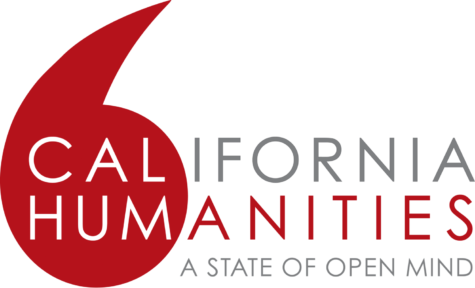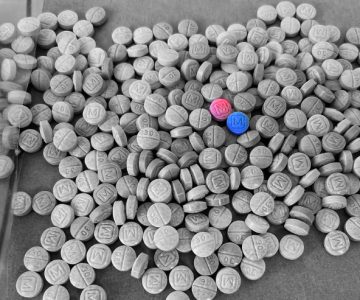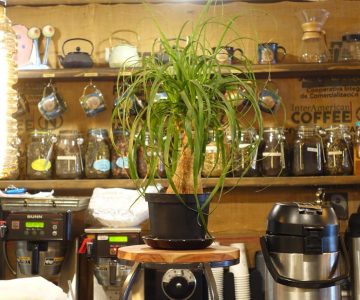As I opened the glovebox of my mom’s car looking for a tissue, out spilled a handful of individually packaged nasal sprays. Confused, I picked them up and analyzed the product. “Those are Narcan,” said my mom, a nurse at a local correctional facility, “Take a few, put them in your purse. They can save a life.”
The weight of my mom’s effortless statement urged me to consider what it would be like if everyone had the same knowledge about fentanyl use as healthcare workers. I learned what Narcan was that day, but how are other people learning? She got it for free at work, but where could everyone else get it? Shortly after our conversation, I started my research to find an answer to these questions. I discovered harm reduction– a practice that destigmatizes drugs and encourages communities to come together to support those in need.
Throughout this project, I met with several individuals at the local forefront of this strategy and learned what harm reduction is in their views, how it works, and how everyday people can make a difference in the rising fentanyl crisis.
The Harm Reduction Approach
When looking for a solution to the growing fentanyl crisis, some California counties turn to the practice of harm reduction. Harm reduction is an approach that prioritizes the experience of the user themselves, providing education and supplies to encourage safe drug use and prevent death by overdose.
While noting that harm reduction implementation will differ based on specific community needs, the National Harm Reduction Coalition has summarized eight principles of harm reduction. These philosophies highlight the reality of drug use in the United States and recognize the dangers that come with using illicit drugs. They value the voice and perspectives of people who use drugs when forming new harm reduction strategies. Most importantly, they aim to meet users where they’re at– without stigma or the expectation of abstinence from drugs.
There are many practical tools associated with harm reduction practices, such as overdose reversal medications, drug testing strips, clean syringes and safer smoking supplies. Providing people with these tools accepts the fact that drug use will occur, while offering support so it happens as safely as possible. This is done to work towards preventing unnecessary overdose, disease and/or death.
Syringe Services Programs (SSPs) are an example of where people can access harm reduction resources in the United States. These state-authorized programs distribute sterile syringes to people who inject drugs, preventing the transmission of diseases like HIV and Hepatitis through shared needles.
It is a common yet misinformed belief that offering sterile syringes promotes drug abuse. The National Institutes of Health, however, reports that SSP participants are more likely to begin rehabilitation treatment, reduce, or end their drug use. This is because SSPs commonly provide additional services, including networking to treatment programs.
There are currently 77 SSPs in California, spanning 35 counties. Amongst these is the Yuba Harm Reduction Collective, a harm reduction organization located in Grass Valley, Calif.
Yuba Harm Reduction Collective Responds
The Yuba Harm Reduction Collective (YHRC) provides more than just syringe services. Since their founding in 2020, they have supported Nevada County communities with several outreach events and projects.
Two co-founders of the YHRC, Bethany Wilkins and Sarah Orton, described the collective’s work in a Zoom interview on April 5, 2024. In this 3 1/2 minute sequence, Orton tells the story of their founding:
“It was just this hodgepodge of a bunch of different folks coming together and meeting… trying to build a vision… since there wasn’t a comprehensive harm reduction organization or program at that time.”
On weekdays from 10 a.m. to 6 p.m., the YHRC offers “Warmline Delivery”, a delivery service providing no-cost, no-questions-asked harm reduction tools such as Narcan, Fentanyl testing trips, sexual health supplies and toiletries. Serving Nevada County, they deliver to towns such as Grass Valley, Nevada City, Penn Valley, Alta Sierra and Lake of the Pines.

Along with their delivery service, the collective participates in a twice weekly Mobile Distribution Project. Through this, volunteers make and distribute fresh lunches to those in need. They also make sure to provide hygiene and basic living supplies such as toothbrushes and deodorant, as well as the previously described harm reduction tools.
There are several ways the community can get involved with the YHRC. Twice a month, they host kit-making parties, inviting the public to join. At these events, volunteers gather to build harm reduction supply bags containing the same items used for their Warmline Delivery.
Anyone interested in getting involved with harm reduction in Nevada County can go to the YHRC website and fill out their YHRC Volunteer Intake Form.
What is Narcan, Anyways?
Naloxone is a medication that can reverse the deadly effects of opioid overdose. It is available to the public in the form of Narcan, a small and easy to use nasal spray. In medical settings, it can be administered in liquid injection form. Narcan has been available for purchase at pharmacies without a prescription in California since March 2023. This year, California is in the process of purchasing a generic version of Naloxone, which will increase its affordability statewide.

Harm reductionists like Wilkins believe one of the easiest ways to practice harm reduction is to carry Narcan all the time, even if you don’t expect to come in contact with drugs. On carrying it, Wilkins said, “It’s really easy and it can save someone’s life. You might not think that you will ever encounter that, but I cannot tell you how many times people have shared stories of someone in a bathroom stall somewhere. Someone was in someone’s driveway once last year! A student told me this, and they had Narcan. So, having it is just a first aid response, right?”
If Narcan is given to someone who is not experiencing an opioid overdose, it will not harm them. If they are overdosing, however, it can save their life. In a study investigating the effectiveness of Naloxone, it was found that bystanders were able to reverse an opioid overdose with Narcan 95% of the time. While effective, it is important to understand that several 4mg doses of Narcan may be needed.
According to Mayo Clinic, Narcan is not a substitute for emergency medical care. It is highly encouraged to call 911 after administering Narcan, so that the person recovering it can be monitored with professional medical surveillance.
Preventative Action at Sierra College
Senate Bill 367, titled the “Campus Opioid Safety Act,” was passed in California on May 10, 2021 and went into effect on Jan. 1, 2023. This bill requires community and state colleges to have overdose reversal medication, such as Narcan, available to students on campus.
In a Zoom interview on March 19, Zach Stanfield-Jones, the one and only Crisis Response Coordinator for Sierra College, explained that there hasn’t been any drug-related incidents on campus since he started working in December 2022. Despite this, he does not hesitate to educate students on the topic of emergency response.
Jones offers free training for CPR and Narcan to students and faculty. He noted working with groups and entire classrooms, as well as one-on-one sessions. When asked how students should respond to a potential drug-related emergency, he stressed the importance of situational awareness and preparedness.
“So often when an emergency happens, people are kind of like, oh, what do I do? And that’s not the time to wonder what to do. You need to know what to do beforehand.”

Acknowledging SB367 and the fact that an overdose can happen at any time, Jones has made it a priority to get Narcan available at Sierra College. He created med-kits including two doses of Narcan and other emergency equipment. They can be found within the Automated External Defibrillator (AED) cases located in high-traffic buildings on campus as this map illustrates. As the Fentanyl crisis continues to grow, Jones has ambitions to keep students as safe and educated as possible. He said:
“Currently within the district we have 22 of them [Med-Kits with Narcan Sprays]. I would like to probably get close to double that number within the next two years or so.”
Along with Jones’ efforts, Sierra College has also had outside organizations on campus to provide harm reduction education and free supplies.
On March 14, Aegis Treatment Centers, an addiction treatment company with a location in Rocklin, set up a booth on the Rocklin campus quad. Employees spoke with students and handed out goodie-bags filled with free Narcan and Fentanyl testing strips, along with information about their program.

Among the booth workers was Caroline Koberle, a Patient Navigator for Aegis. In an interview at the scene, Koberle excitedly shared their success at Sierra College.
“So far this morning we’ve handed out almost 400 Narcan kits, which is more than we thought we would. It’s fantastic because… whatever backpack it goes into, if that Narcan kit is used, it is going to be used to reverse an overdose.”
Treatment from a Medical Perspective
For some people, harm reduction methods can lead to medically-assisted treatment (MAT) for drug addiction. MAT typically involves prescribed doses of medications such as Methadone, which relieve the cravings and painful side effects of opioid withdrawal. Koberle explains that a patient’s journey through Aegis involves daily medication and work with counselors to improve addiction management and life skills.
When it comes to demographics, Koberle emphasized that anyone and everyone can be impacted by substance abuse. She said that in her work doing intakes, Fentanyl has become the most common drug of choice, with patients as young as 18 seeking help. She said, “There’s a lot of kids dying. You know, they think they’re taking a Xanax, and they have no tolerance for fentanyl and it’s just… it’s killing them.”
As someone who has personally struggled with addiction in the past, Koberle is passionate about breaking the stigma around drugs. When asked about common misconceptions about substance abuse, she made it clear that people who use drugs are not bad people, and that recovery is possible.
“You can go through treatment and you can give back to society. Just because you’re a drug addict doesn’t mean that you’re any less than anybody else. It just means that you’re struggling with a problem.”
Practicing Harm Reduction
There are small changes everyone can make in their day to day lives that can make a world of difference to those struggling with addiction. According to Wilkins, being conscious of the language you use is an overlooked form of harm reduction. She explains that terms like “junkie” and “crackhead” have been normalized and while they are usually used lightheartedly, they are still perpetuating harmful stereotypes about people who use drugs.
“Stigma is deadly, and there’s so many ways that our words can have massive impact on someone, and we have no idea that it has that impact.”
Instead of describing someone solely as an “addict,” person-first language like “person who uses drugs” or “person with a substance use disorder” displays compassion and understanding of the complex nature of addiction.
Along with carrying Narcan, a crucial aspect of harm reduction is knowing when to use it. According to the Center for Disease Control, someone experiencing an opioid overdose will typically be limp, fall in and out of consciousness, have shallow breathing and small pupils. Death can be prevented with the help of bystanders who are able to recognize an overdose and administer Narcan.
The biggest takeaway from harm reduction philosophies is not to end drug use, but to mitigate the dangerous aspects of it. Individuals like Orton, Wilkins, Jones and Koberle prove just how many avenues there are in the fight to destigmatize drug use and prevent overdose death.
Through advocacy and supply distribution from the YHRC, Nevada County residents have direct access to aid for safe drug use. For people who decide abstinence from drugs is for them, treatment centers like AEGIS provide support for the medical aspect of recovery. Preventative education can be found on college campuses like Sierra, and with the implementation of Senate Bill 367, Narcan will only become more available to students.
Looking at the Fentanyl epidemic in the United States as a whole can be overwhelming. At first glance, it may seem like a helpless cause. After learning about harm reduction and some of the people and organizations behind it in our community, however, this is far from the case.
Because of the people behind this work, resources are more accessible– you won’t have to rely on stray Narcan packages in the glovebox to be prepared!
Written and Reported by Miranda Ricks

Editor’s Note
“Harm Reduction: Support, not Stigma” by Miranda Ricks is one in a set of stories on fentanyl in our community. See also, “Law and Order or a Gentle Touch? County Neighbors Fight Fentanyl” and “Seeds of Addiction, Roots of Recovery,” by Greg Micek.
These stories were supported through the California Humanities “Emerging Journalist Fellowship program.” The program awards student-fellows in journalism programs at California Community Colleges support to do community-based journalism, work with a faculty adviser, and participate in a statewide cohort. 2024 is the third year that the Sierra College journalism program has been awarded this significant statewide grant.
For more information, visit www.calhum.org. Any views or findings expressed herein do not necessarily represent those of California Humanities or the National Endowment for the Humanities.



